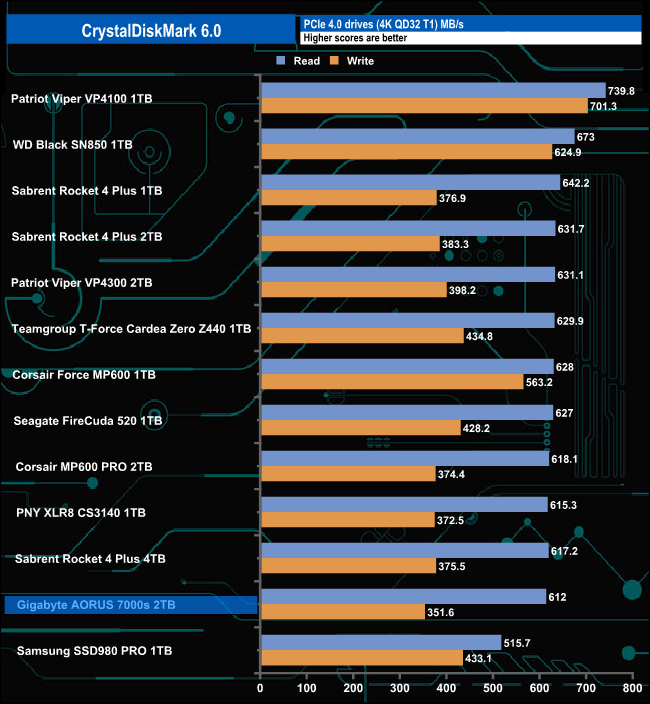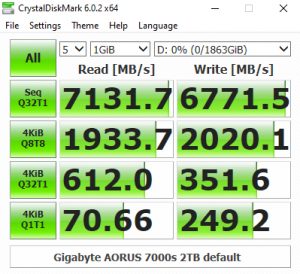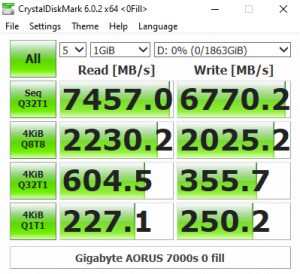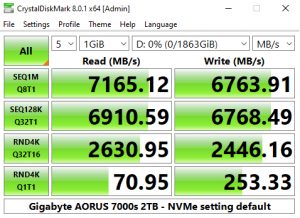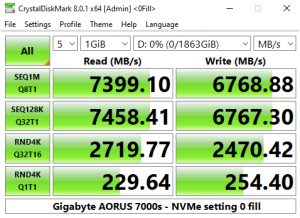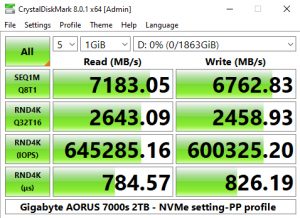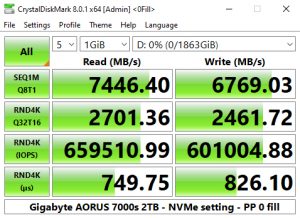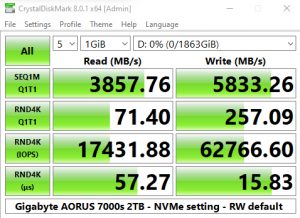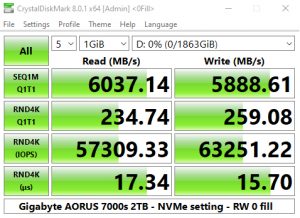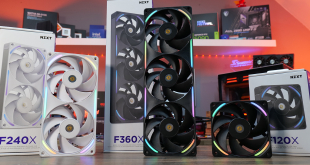CrystalDiskMark is a useful benchmark to measure theoretical performance levels of hard drives and SSD’s. We are using versions 6.0 and 8.0.
Gigabyte's Aorus 7000s does seem to struggle with the 4K QD32 T1 test in CrystalDiskMark 6. Having said that we could confirm the official maximum Sequential read performance figure for the drive of 7,000MB/s with a tested CDM v6 read figure of 7,131MB/s (switching to compressed data saw this figure rise to 7,457MB/s). The tested best write figure of 6,771MB/s is 79MB/s short of the official Sequential maximum of 6,850MB/s.
Comparing the two CrystalDiskMark result screens shows that the Phison E18 controller is much more efficient when reading compressible Sequential and 4K data at a queue depth of 1.
CrystalDiskMark 8
CrystalDiskMark 8 comes with a couple of interesting ready-made testing profiles as well as a dedicated NVMe setting. The best tested sequential figures for reads, 7,446MB/s (Peak Performance profile, compressed data), definitely confirms the official 7,000MB/s read figure for the drive. The best tested CrystalDiskMark 8 write figure was 6,769MB/s (Peak Performance profile, compressed data), a little short of the official maximum of 6,850MB/s.
The best tested random 4K figures in CDM8 for the drive was the 659,510.99 IOPS (in the Peak Performance profile using compressed data) for reads which is actually a little better than the official up 650,000 IOPS. However, the best tested random write figure of 601,004.88 IOPS is some way short of the official 700,000 IOPS maximum for the drive.
 KitGuru KitGuru.net – Tech News | Hardware News | Hardware Reviews | IOS | Mobile | Gaming | Graphics Cards
KitGuru KitGuru.net – Tech News | Hardware News | Hardware Reviews | IOS | Mobile | Gaming | Graphics Cards


